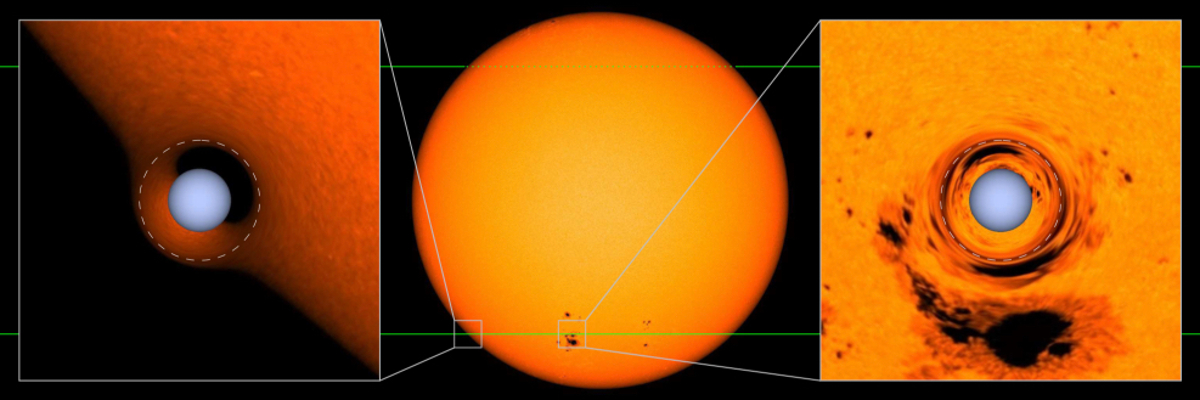
 Credit: Eric Agol (UW), NASA/SDO HMI science teams
Credit: Eric Agol (UW), NASA/SDO HMI science teams
The Anti-Shadow
According to Einstein, massive bodies distort the spacetime which surrounds them. This distortion can cause objects which are behind massive foreground objects to apparently shift their position and to change shape. The distortions of spacetime can also magnify the light from stars and galaxies, so that these gravitational lenses are, in some sense, a natural telescope allowing the study of very distant objects that would otherwise be inaccessible with current human technology. Binary star systems, consisting of a normal star orbited by a collapsed object like a black hole, neutron star or white dwarf, offer unique ways to study gravitational lensing. This is because light from the normal star can be amplified by the compact object every time the compact object moves in front of the normal star (at least if we happen to view the binary system in the orbital plane). Though predictions of this phenomenon date back at least 45 years, it's been difficult to actually measure because the expectecd brightness increase is generally very small. But thanks to the extraordinarily sensitive measurements obtained by the Kepler Space Telescope, we now have the capability to look for evidence of binary self-lensing. Kepler's prime mission was to measure tiny brightness fluctuations in starlight produced by the shadow of planets as they move across the star. Kepler is best known for discovering thousands of planetary systems and helping to establish how common planets are in our Galaxy. But Kepler's high-accuracy measurements of hundreds of thousands of stars also provides a treasure trove for astronomers. Now, for the first time, Kepler's high-accuracy measurements have shown a periodic brightening in the light of a binary star due to the magnification of the star's light as a white dwarf passes in front of the star. The image above shows an illustration of this system. The center illustration shows the normal star, while the left and right panels show zoom-ins on the location of the white dwarf as it moves across the disk of the star star as viewed from earth, illustrating the distortion of the star's image by the ultra-dense white dwarf. Although Kepler has recently run out of fuel, and has reached its end of mission, its legacy will be continued by NASA's Transiting Exoplanet Survey Satellite, which just recently began its observing mission.
Published: November 5, 2018
<
HEA Dictionary ● Archive
● Search HEAPOW
● Other Languages
● HEAPOW on Facebook
● Download all Images
● Education ● HEAD
>

Each week the HEASARC
brings you new, exciting and beautiful images from X-ray and Gamma ray
astronomy. Check back each week and be sure to check out the HEAPOW archive!
Last modified Tuesday, 27-Feb-2024 10:10:17 EST


